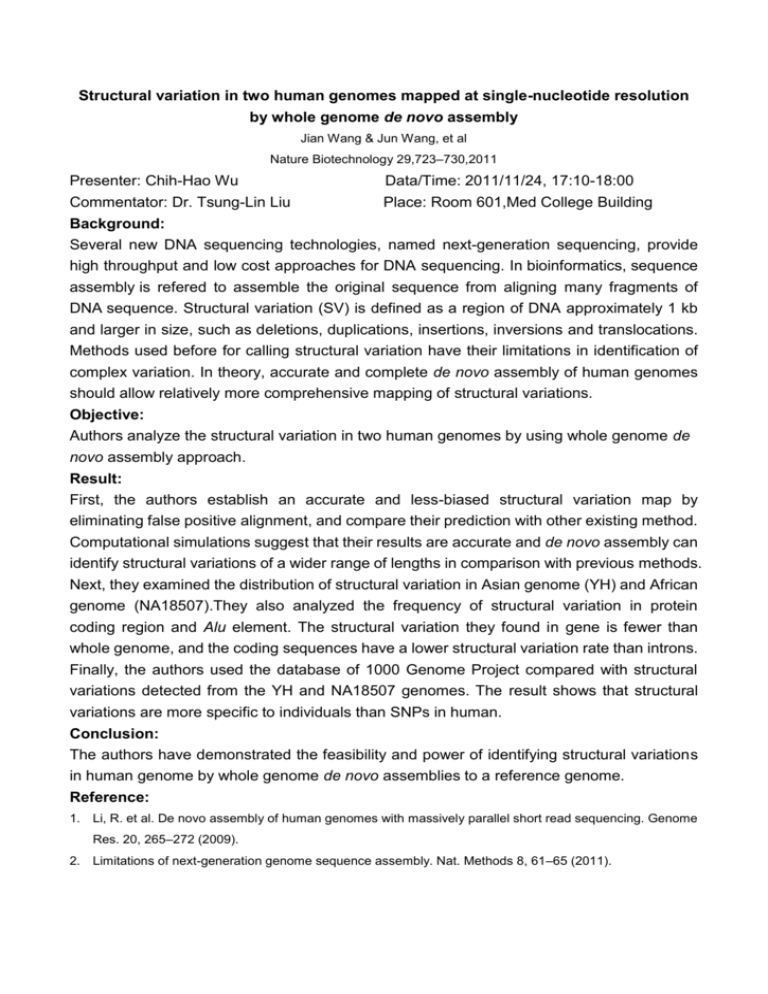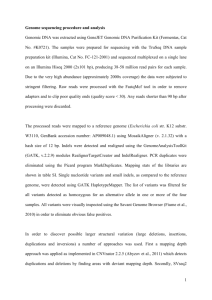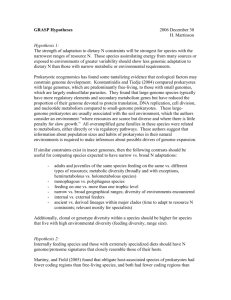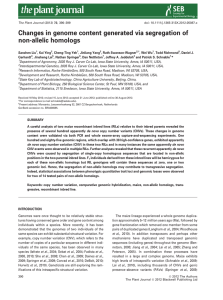Structural variation in two human genomes mapped at single
advertisement

Structural variation in two human genomes mapped at single-nucleotide resolution by whole genome de novo assembly Jian Wang & Jun Wang, et al Nature Biotechnology 29,723–730,2011 Presenter: Chih-Hao Wu Commentator: Dr. Tsung-Lin Liu Data/Time: 2011/11/24, 17:10-18:00 Place: Room 601,Med College Building Background: Several new DNA sequencing technologies, named next-generation sequencing, provide high throughput and low cost approaches for DNA sequencing. In bioinformatics, sequence assembly is refered to assemble the original sequence from aligning many fragments of DNA sequence. Structural variation (SV) is defined as a region of DNA approximately 1 kb and larger in size, such as deletions, duplications, insertions, inversions and translocations. Methods used before for calling structural variation have their limitations in identification of complex variation. In theory, accurate and complete de novo assembly of human genomes should allow relatively more comprehensive mapping of structural variations. Objective: Authors analyze the structural variation in two human genomes by using whole genome de novo assembly approach. Result: First, the authors establish an accurate and less-biased structural variation map by eliminating false positive alignment, and compare their prediction with other existing method. Computational simulations suggest that their results are accurate and de novo assembly can identify structural variations of a wider range of lengths in comparison with previous methods. Next, they examined the distribution of structural variation in Asian genome (YH) and African genome (NA18507).They also analyzed the frequency of structural variation in protein coding region and Alu element. The structural variation they found in gene is fewer than whole genome, and the coding sequences have a lower structural variation rate than introns. Finally, the authors used the database of 1000 Genome Project compared with structural variations detected from the YH and NA18507 genomes. The result shows that structural variations are more specific to individuals than SNPs in human. Conclusion: The authors have demonstrated the feasibility and power of identifying structural variations in human genome by whole genome de novo assemblies to a reference genome. Reference: 1. Li, R. et al. De novo assembly of human genomes with massively parallel short read sequencing. Genome Res. 20, 265–272 (2009). 2. Limitations of next-generation genome sequence assembly. Nat. Methods 8, 61–65 (2011).









